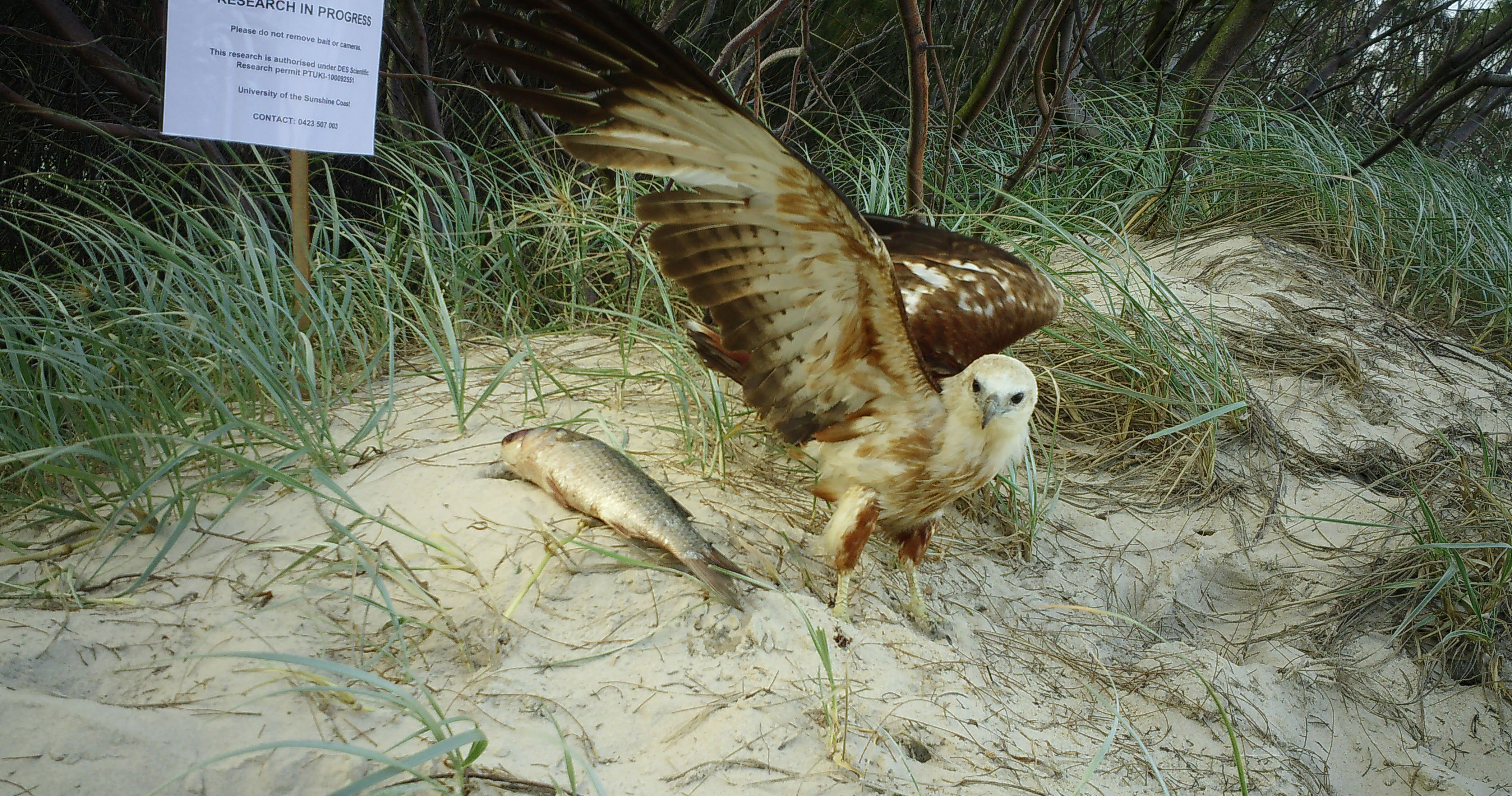While the beach is always a popular place for university students during summer, for some it has been more about research than recreation.
University of the Sunshine Coast PhD candidate Brittany Elliott and Science Honours students Jasmine Ballantyne and Taylor Cooper have been busy studying the vertebrates (animals that have a backbone) of the coastal dunes of South East Queensland.
Their work has focused principally on birds – from large raptors, such as sea eagles and ospreys, to the small songbirds of the coastal heathlands.
It has taken them to 20 sites on the Sunshine Coast, along with locations on North Stradbroke and Bribie Islands. Surveys are typically done using motion-activated cameras, resulting in some spectacular images.
Their supervisor, Senior Lecturer in Animal Ecology Dr Ben Gilby, said the work would help establish the health of animal populations across the region and identify whether humans are having an impact on animal distribution.
Dr Gilby, who is based at USC’s Moreton Bay campus at Petrie, said the students’ ongoing work had already provided some important insights.
“Jasmine and Taylor found significant effects of coastal urbanisation on bird assemblages in their projects,” he said. “Biodiversity tends to be lower at sites nearer to urbanisation.
“Taylor's research showed, however, that there is nuance in this. Some species of honeyeater are more abundant in areas where they can sneak a feed from flowers in people's gardens.
“Jasmine's work showed that this urbanisation effect extends into the sea, affecting the distribution of fish in the surf zones of the same beaches.”
Taylor, who studies at USC Moreton Bay, said being in nature and observing wildlife was the best part of her degree.
“It is exciting, interesting and challenging, and I love that our research is working towards making a difference to conserve our beautiful wildlife and environment,” she said.
Brittany and Dr Gilby will now work on a project seeking to connect this bird research with information about plants and insects.
“This will give us a great overarching perspective of the condition of coastal dunes,” Dr Gilby said. “We will also be expanding the surveys of the ospreys and eagles from just the beaches and into the surrounding landscapes.
“For example, we'll be surveying sites across the Pumicestone, Maroochy and Mooloolah catchments to identify hotpots of osprey abundance, and therefore to identify possible sites where management should be focused.”
Dr Gilby said the work was supported by Sunshine Coast Council and was part of a larger project monitoring the condition of coastal ecosystems. The USC researchers were also providing updates to traditional owners and the Queensland Parks and Wildlife Service.
Media enquiries: Please contact the Media Team media@usc.edu.au

